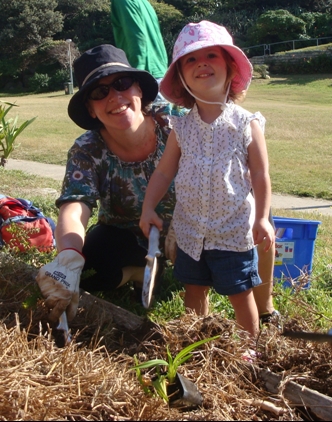- Home Home
-
Residents
Residents
- Waste & recycling Bins, clean-ups and disposing of tricky household items
- Parking Permits, car parks, maps and safety
- Your trees, plants & garden Tree care and maintenance on private property
- Neighbourhood issues Graffiti management, safety, noise and disturbance, aba...
- Pets Dog and cat ownership, lost animals and off-leash parks
- Precinct committees Your local connection to Council
- Waverley LGA Maps Maps of the environment, planning zones and more
- Payments Rates, online certificates and information on paying fi...
-
Community
Community
- Over 55s Services and programs for people over 55
- Children, youth & family services Child care, youth programs, kids activities and events,...
- Cultural diversity Cultural diversity policy, services including interpret...
- Disability inclusion Services and support for people with a disability
- Housing & homelessness Affordable Housing Program, homelessness and support
- Volunteering & Neighbourhood Projects Connecting locals with community projects
- Awards & Grants Apply for a community grant, financial support for comm...
- Community Profile Waverley Demographic Profile and Social Atlas
-
Business
Business
- Resources for Business Events, grants and support
- Regulations & permits Information on regulations, permits and licences for bu...
- Sustainable business Waverley Council encourages businesses to reduce waste,...
- Commercial waste & recycling services Tailored waste services for business
- Procurement Submitting tenders & expressions of interest to Council
- Innovation Roadmap 2025 to support business
- Tourism Home to Australia's most famous beach.
- Sponsorship Support local events
-
Recreation
Recreation
- Events Find out what’s on in your area. This is your guide to ...
- Places of interest Places of interest in Waverley, including local walks
- Visitors Information for visitors to the Waverley area, getting ...
- Beaches & coast Information on our beaches and coastline, Bondi, Tamara...
- Parks Parks and open spaces around Waverley, playgrounds, use...
- Arts & culture Arts programs, Artist in Residence, Waverley Art Prize,...
- Sports fields & outdoor court Sports venues and facilities, use of public open space
- Venue hire Information on Council owned and managed venues for hir...
-
Environment
Environment
- Making sustainability ‘second nature’ Join local community activities and events
- Public tree management Street Tree Masterplan and planting zones
- Networks & Support Find resources, programs and networks supporting enviro...
- Water & coast Water conservation and quality, our coastline, projects
- Bushland & wildlife Natural landscape of Waverley, bushland management, nat...
- Sustainable transport Public transport, cycling, transport projects and polic...
- Responding to Climate Change & Energy Emissions Emissions, resilience and circular economy
-
Planning & Development
Planning & Development
- Development Applications The DA process, key documents & community consultation
- DA Tracking Tool Search a Development Application by number or date
- Application forms & certificates Includes Construction and Occupation Certificates
- Waverley Local Planning Panel (WLPP) DA determination panel
- Compliance & regulations Including fire safety, waste & environmental health
- Heritage & design Conservation Areas, Design Excellence and Awards
- Strategic Urban Planning Urban and Environment Strategies, Planning Proposals
- Major projects Council-delivered building, streets and parks
-
Council
Council
- Organisation structure Information on how Council delivers services, organisat...
- Mayor & councillors Your Mayor, Councillors, wards and contact details
- Council & committee meetings Dates, agendas and minutes of meetings of Council
- Advisory committees Advisory Committees of Council
- Policies, procedures & plans Key operational and strategic plans of Council, reports
- Jobs Careers, current vacancies, working for Waverley Counci...
- Access to information Gaining access to publicly available information, acces...
- Payments Rates, online certificates and information on paying fi...
- Home
- >
- Gardening with native plants
- Archived PDFs
- (( Community Safety Advisory Committee ))
- Repair & Maintenance Work at Waverley Cemetery
- Free home energy helpline
- Waverley Cliff Walk
-
YAP 2022
- yap-all_winners.jpg
- mayor_with_charlotte_jurcich.jpg
- yap_22_-_first_place_junio_Jaiyi_Wu.jpg
- yap22-Intermediate_winner_-_celest_Ferreira.jpg
- Yap22-Mayors_highly_commended-Kathryn_Jordan.jpg
- Yap22-Mayors_Prize_-_Charlotte_Juracich.jpg
- yap22-judges.jpg
- yap22-voting.jpg
- Yap_22_-Lili_Alaska.jpg
- yap_22-senior_winner_-_charlotte_juracich.jpg
- yap22_-_niamh_bookallil.jpg
- yap22-alex_ogorman_2.jpg
- Image 3x15
- Blue_Bin.jpg
- Greeb_Lid_Bin.jpg
- Yellow_Lid_Bin.jpg
- Red_Lid_Bin_Sticker_p-page-001.jpg
- Waverley local heroes of the year 2016
- Waverley local heroes of the year 2015
- Waverley local heroes of the year 2014
- Waverley local heroes of the year 2013
- Waverley local heroes of the year 2012
- 2017 Brightest & Best Business Awards
- 2016 Brightest & Best Awards
- 2015 Brightest & Best Awards
- 2014 Brightest & Best Business Awards
- 2013 Brightest & Best Business Awards
- 2018 Brightest & Best Business Awards
- Past winners
- Coastal walk stats icons
- Spendmapp.jpg
-
Educators galleries
- IMG_5972.jpg
- IMG_5940.jpg
- IMG_5950.jpg
- IMG_5955.jpg
- IMG_5958.jpg
- IMG_5964.jpg
- Luciana5.jpg
- Luciana1.jpg
- Luciana2.jpg
- Luciana3.jpg
- Luciana4.jpg
- anthea_2.jpg
- Mana_Photo_for_Profile.jpg
- Mana_environment.jpg
- mel.jpg
- becca1.jpg
- becca2.jpg
- becca3.jpg
- bex.jpg
- jasmine.jpg
- jaz_kids.png
- jaz_kids2.png
- jess.jpg
- jess1.jpg
- jessica_environment2.jpg
- jess3.png
- jo.jpg
- jo1.jpg
- jo2.jpg
- jo3.jpg
- jun1.jpg
- jun2.jpg
- junko.jpg
- kathleens.jpg
- Lani.jpg
- lani1.jpg
- lani2.jpg
- lani3.jpg
- Meena2.jpg
- IMG-7198.JPG
- meire.PNG
- rebecca_l.png
- roselle_2.jpg
- tal1.jpg
- tal2.jpg
- talya.jpg
- zizi.jpg
- zizi1.jpg
- zizi2.jpg
- jaz_kids.jpg
- jaz_kids2.jpg
- jess2.jpg
- jess3.jpg
- meena.jpg
- meire.jpg
- Image_2.JPG
- Image_3.JPG
- kathe.jpg
- kk.jpg
- mana_envornment_3.jpg
- Mana_environment_2.jpg
- elodie_envion.jpg
- elodie_envor.jpg
- elodie_envornment.jpg
- elodie.jpg
- IMG-7196.JPG
- P1200714.JPG
- P1200718.JPG
- P1200719.JPG
- 3.jpg
- eliana_e4.jpg
- eliana2.jpg
- ruth_colour.jpg
- suehouse.JPG
- 2016-01-27_004_2.jpg
- 2015-02-10_024.jpg
- lisa.JPG
- IMG_3082_-_Copy.jpg
- IMG_6848.jpg
- IMG_6849_-_Copy_-_Copy.jpg
- 2016-01-28_013.jpg
- 2016-12-20_001.jpg
- 2017-03-14_026.jpg
- 2017-04-12_014.jpg
- 2017-05-22_003.jpg
- backdeck.jpg
- IMG_6072.jpg
- IMG_6499.jpg
- playroom1.jpg
- angelika.jpg
- ang_kids.jpg
- Anjelika_Denissova_pic.jpg
- Ericamartins.jpg
- Gabriella.jpg
- Jasmine_Harrington.jpg
- Jo_Guyatt.jpg
- Kathleen_Abian.jpg
- Mariana_Pinheiro.jpg
- melgamazon.jpg
- Nicoletta.jpg
- Sue_Lowe.jpg
- Talya_Straiton.jpg
- IMG_0417.jpg
- IMG_0394.jpg
- IMG_0456.jpg
- ayelwet.jpg
- AyeletSinger.jpg
- AyeletSinger12.jpg
- AyeletSinger13.jpg
- Leticia_environment.jpg
- Leticia_environment2.jpg
- Leticia_envoro.jpg
- Leticiaw.jpg
- luda_e1.jpg
- luda_e2.jpg
- luda_e3.jpg
- Luda.jpg
- 2.jpg
- 1.jpg
- Waverley local heroes of the year 2018
- DCP 2012
- 2008
- 2009
- 2010
- 2011
- 2012
- Small_Grants_Community_and_Cultural_Guidelines.pdf
- (( Commercial_Fitness_Groups_Personal_Trainers_Policy_2016.pdf ))
Gardening with native plants
The eastern suburbs of Sydney once supported a unique variety of native plants. With the growth of the urban environment, large areas of this bushland have been lost along with many of the animals it once supported. While this cannot be reversed, private gardens can be great habitats to many of our remaining native birds and animals.
Find out how the Living Connections Program can support you to create a habitat garden, with free native seedlings and advice. Check out the Waverley Habitat Guide here, which contains a native plant list suitable for the Waverley area.
Below are some more handy hints for growing local native plants.
Site assessment and species selection
Assess your planting site for conditions of sun/shade (in both winter and summer); soil type (whether its natural or improved by additions of organic matter and fertiliser) and drainage (whether the roots will experience inundation for extended periods).
Once you have assessed the planting site, research the native plants most suitable for it. You can purchase plants that are local to the eastern suburbs area from Randwick Community Nursery and Indigigrow Nursery
Preparation
The key to long-term success with your native garden is thorough preparation. There is no substitute for good weed control. Carry out a number of weed control sessions, allowing a few months in between each one so that weeds can re-emerge before planting.
Planting
- Clear away mulch or organic matter so that it does not get mixed in with the soil
- Dig a hole as deep as the plant pot, and 2 to 3 times as wide
- Gently remove the plant from its container and place in the centre of the planting hole
- Backfill the soil around the rootball. The top of the rootball should finish flush with the surrounding soil level
- Make a small soil well around the plant to direct water into the rootball
- Place 75mm of mulch around the plant, keeping clear of the stem to avoid root rot
- Thoroughly water each plant as soon as possible after planting
Weeding
Weeds compete with your native plants, and can take over if left unchecked. Noxious weeds are known to cause problems, and should be removed first, taking care not to leave large areas of soil exposed. The noxious weed lantana provides good habitat for small birds, and should only be removed when an alternative habitat is available. If you keep your garden well mulched, weeding can be kept to a minimum, however weeds will always be transported by wind, water and bird droppings. It is a good idea to ‘de-head’ or remove any plant seeds or fruits and dispose of them to stop them spreading.
Mulching
Mulch will suppress the growth of weeds from seeds in the soil, and reduce the need for watering. A coarse organic mulch should be spread to a maximum depth of about 100mm. Grass lawn clippings do not make a good mulch as they form a thick matt that stops water and air from entering the soil. Use fallen leaves or branches from your garden as mulch - this is an excellent way of recycling your garden waste, improving your plants' drought resistance and inhibiting weeds. It is important to make sure mulch does not build up against the plant stems or trunks as this can lead to fungal infection and insect attack.
Fertilising
Local native plants do not require fertilising as they are adapted to low nutrient local soils. Decaying organic mulch and leaf litter will provide most of the required nutrients. Do not use regular garden fertilisers as they contain phosphorus levels that can damage native plants, and encourage the growth of exotic weed species.
Pruning
Some native plant species, such as Coastal Rosemary, respond to regular pruning. The rule of thumb is to prune only the green or current year’s growth to encourage branching and create a bushier specimen. Use your native plant prunings as organic garden mulch, or put them in your compost bin.
Watering
 All new plantings need additional water to become established, especially during the first six weeks. After that time, watering can be gradually reduced. A thorough soaking is better for plant establishment than regular light watering. Additional water may be needed over the first three summers. The Eastern Sydney region often has water repellent sandy soils, and you may have seen water beading and rolling along the surface of the soil. This occurs during long periods of dry weather when the sandy soil completely dries. To prevent this from happening, there are two options:
All new plantings need additional water to become established, especially during the first six weeks. After that time, watering can be gradually reduced. A thorough soaking is better for plant establishment than regular light watering. Additional water may be needed over the first three summers. The Eastern Sydney region often has water repellent sandy soils, and you may have seen water beading and rolling along the surface of the soil. This occurs during long periods of dry weather when the sandy soil completely dries. To prevent this from happening, there are two options:
- Place organic mulch around the plants to boost the activity of micro-organisms in the soil. increase the soil’s water holding capacity and improve your plants' drought resistance.
- Apply a wetting agent to the soil. Wetting agents are also known as surfactants and help water spread more easily through the soil surface. A good wetting agent will break down the water repellence of the soil, increase its water holding capacity and will remain active in the soil for up to a year. Be careful not to over water your newly planted seedlings. Over watering leads to the plant establishing a shallow root system. This reduces the plant’s ability to survive dry periods and as the plant grows older, it will be susceptible to blowing over in windy conditions.
The Local Native Plants for Sydney's Eastern Suburbs brochureThis external link will open in a new window gives information about easy-to-grow, attractive natives that are available from native nurseries.
Subscribe to our Environment E-news
Get the latest news and tips on creating an environmentally friendly community, plus free workshops and events. Read our latest blogs here.
Subscribe now


